Topics
Category
Era
St. Peter Claver Church, St. Paul
Founded in 1888, St. Peter Claver Church was the first African American Catholic Church in Minnesota. The parish was created by St. Paul’s African American Catholic community and an Archbishop who vowed to “blot out the color line.”
Before the parish was founded, St. Paul’s small African American Catholic population attended services at one of the Catholic churches in the area. However, Archbishop John Ireland hoped to actively recruit more African American Catholics. Archbishop Ireland was an early civil rights supporter. He called upon all Catholics to ignore differences of race. After the 1888 canonization of St. Peter Claver, a missionary to enslaved people in Colombia, Ireland saw an opportunity. That year, he invited Father John Slattery to make a speaking tour of St. Paul. Slattery, a white priest from Baltimore, was well known for his preaching to African American communities.
By the end of Slattery’s visit, the St. Peter Claver Sodality was taking shape in St. Paul. The Sodality, a Catholic group of religious laypeople, met in a church in downtown St. Paul. Their services were led by priests from the cathedral. Early members included noted St. Paul lawyer Fredrick McGhee and Western Appeal founder Samuel Hardy. The Sodality held services on Market Street until 1892, when it began to plan for expansion.
In the summer of 1892, the group began to raise funds for the construction of a new church. They bought land on the corner of Farrington and Aurora Avenues in St. Paul. The congregation of St. Peter Claver was officially formed on October 19. Fredrick McGhee and Archbishop Ireland both signed its charter. The new church was dedicated on December 18, 1892.
St. Peter Claver was a cultural center of the African American Catholic community. The congregation held Sunday school classes and had a church choir. Both men’s and women’s community groups formed. In 1896, the congregation began the Toussaint L’Ouverture Literature Society. The popular society drew both church members and nonmembers to its meetings. Married couples and families dominated church membership, so the church offered many educational and cultural activities.
In 1910, Father Stephen Theobald was named pastor of St. Peter Claver. Theobald was born in British Guiana and studied at Cambridge before becoming a journalist. Under the mentorship of Archbishop Ireland, Theobald was the first African American to be ordained at the St. Paul Seminary. Theobald was often called “the little giant” because of his short stature and fiery personality. He was a passionate leader and was nationally recognized for his lectures and writings on civil rights. He led the parish until his death in 1932.
In the mid-twentieth century, the parish of St. Peter Claver underwent several major changes. Father Jerome Luger noted that the congregation had moved west. He wanted the parish to move west with them. The major relocation of the 1950s was largely thanks to Luger’s efforts, although he died before the move was completed. The church opened a school and gymnasium in 1950, at the site of the new church complex at Oxford and St. Anthony Avenue. It included a bowling alley in the basement to help defray the costs of the tuition-free school. A convent was built in 1954. The new St. Peter Claver church was completed in time for Easter, 1957. A rectory building followed later that year.
In the more than 100 years since its founding, St. Peter Claver has been an anchor in its community. Although the church was established for and by African Americans, its congregation, like its neighborhood, was always racially mixed. The church is committed to social justice, and works to provide essential services to its surrounding community. In its second century, it continues to be a dynamic parish, both locally and within larger organizations including the National Black Catholic Congress. St. Peter Claver Church, started by a small but devout group of African American Catholics, has offered support, fellowship, and leadership to members and nonmembers alike.
Bibliography
Butler, Jon. “Communities and Congregations: The Black Church in St. Paul, 1860–1900.” The Journal of Negro History 56, no. 2 (April 1971): 118–134.
Nelson, Paul D. Fredrick L. McGhee: A Life on the Color Line, 1861–1912. St. Paul: Minnesota Historical Society Press, 2002.
Historical Souvenir, Golden Jubilee, St. Peter Claver’s Church. St. Paul, 189–1942. St. Paul: St. Peter Claver Church, 1942.
Diamond Jubilee, St. Peter Claver Church, St. Paul, Minnesota, 1892–1967. St. Paul: St. Peter Claver Church
Wright, Scott. Gather Us In: A History of the Parishes of the Archdiocese of Saint Paul and Minneapolis. St. Paul: Catholic Archdiocese of St. Paul and Minneapolis, 2000.
Related Resources
Primary
Stephen L. Theobald Papers, 1902–1983
Manuscript Collection, Minnesota Historical Society, St. Paul
http://www.mnhs.org/library/findaids/00629.xml
Description: Photocopies of letters sent by St. Peter Claver’s Father Stephen Theobald.
Conway, Rev. John. “A Colored Etching.” Donahoe’s Magazine XXXII (1894): 511–514.
“Father Harrison’s Letter.” The Appeal, February 15, 1890.
“Celebrated the Feast.” St. Paul Globe, September 13, 1892.
“St. Peter Claver Church.” St. Paul Daily Globe, December 19, 1892.
“A Week’s Mission to be Held at St. Peter Claver Catholic Church.” The Appeal, April 13, 1918.
Secondary
History of St. Peter Claver Church, St. Paul, Minnesota. St. Paul: St. Peter Claver Church, 1992.
O’Connell, Marvin R. Pilgrims to the Northland: The Archdiocese of St. Paul, 1840–1962. Notre Dame, IN: Notre Dame University Press, 2009.
Wingerd, Mary Lethert. Claiming the City: Politics, Faith, and the Power of Place in St. Paul. Ithaca, NY: Cornell University Press, 2001.
Web
St. Peter Claver School. About School.
http://www.stpclaverschool.org/about/
Related Images
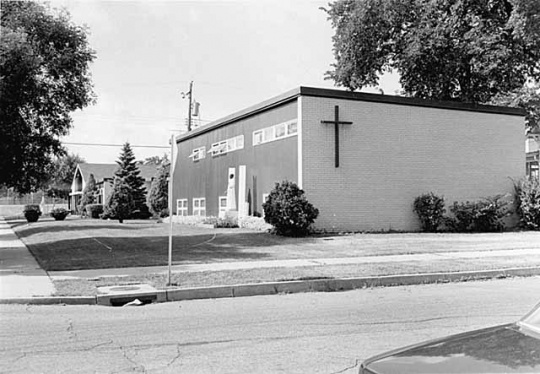
St. Peter Claver Catholic Convent, 389 North Oxford, St. Paul
St. Peter Claver Catholic Convent, 1975.
Holding Location
Articles
More Information
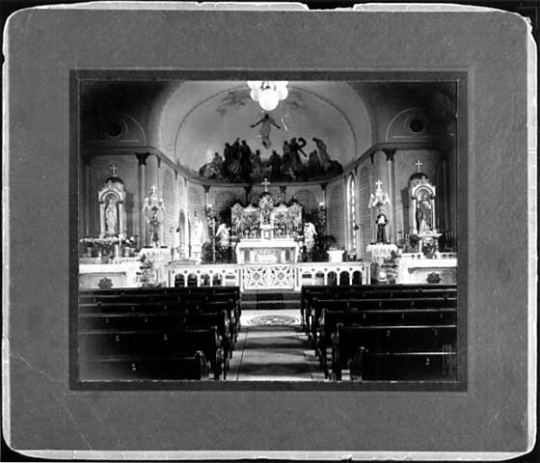
Interior, St. Peter Claver, St. Paul
Interior, St. Peter Claver Church, St. Paul, c.1916.
Public domain
Holding Location
Articles
More Information
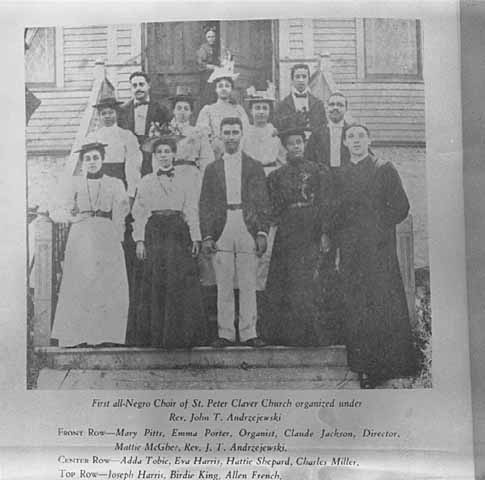
African American choir of St. Peter Claver Church, St. Paul
Members of the St. Peter Claver Church Choir with their leader, Fr. John Andrzejewski, undated.
Public domain
Holding Location
Articles
More Information
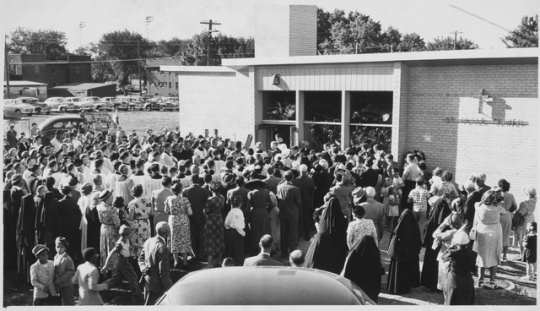
Dedication of St. Peter Claver Roman Catholic School, 1060 West Central, St. Paul
Dedication of St. Peter Claver Roman Catholic School, 1950.
Holding Location
Articles
More Information
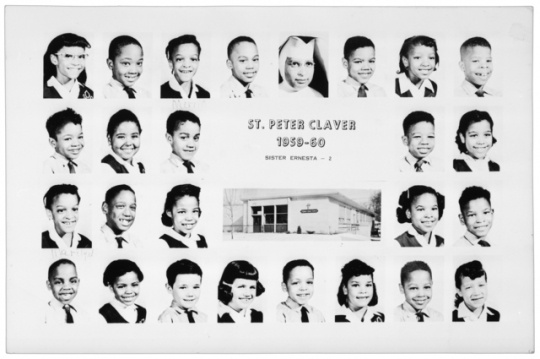
Second grade class, St. Peter Claver, St. Paul
Second grade class, St. Peter Claver, St. Paul, 1959–1960.
Holding Location
Articles
More Information

St. Peter Claver Catholic Convent, 389 North Oxford, St. Paul
St. Peter Claver Catholic Convent, 1975.
Holding Location
Articles
More Information

Interior, St. Peter Claver, St. Paul
Interior, St. Peter Claver Church, St. Paul, c.1916.
Public domain
Holding Location
Articles
More Information

African American choir of St. Peter Claver Church, St. Paul
Members of the St. Peter Claver Church Choir with their leader, Fr. John Andrzejewski, undated.
Public domain
Holding Location
Articles
More Information

Dedication of St. Peter Claver Roman Catholic School, 1060 West Central, St. Paul
Dedication of St. Peter Claver Roman Catholic School, 1950.
Holding Location
Articles
More Information

Second grade class, St. Peter Claver, St. Paul
Second grade class, St. Peter Claver, St. Paul, 1959–1960.
Holding Location
Articles
More Information

St. Peter Claver Catholic Convent, 389 North Oxford, St. Paul
St. Peter Claver Catholic Convent, 1975.
Holding Location
Articles
More Information
Related Articles
Turning Point
St. Peter Claver’s Sodality is established in St. Paul in 1888. The African American Catholic group would go on to found St. Peter Claver Church.
Chronology
1888
1892
1910
1947
1950
1957
1971
Bibliography
Butler, Jon. “Communities and Congregations: The Black Church in St. Paul, 1860–1900.” The Journal of Negro History 56, no. 2 (April 1971): 118–134.
Nelson, Paul D. Fredrick L. McGhee: A Life on the Color Line, 1861–1912. St. Paul: Minnesota Historical Society Press, 2002.
Historical Souvenir, Golden Jubilee, St. Peter Claver’s Church. St. Paul, 189–1942. St. Paul: St. Peter Claver Church, 1942.
Diamond Jubilee, St. Peter Claver Church, St. Paul, Minnesota, 1892–1967. St. Paul: St. Peter Claver Church
Wright, Scott. Gather Us In: A History of the Parishes of the Archdiocese of Saint Paul and Minneapolis. St. Paul: Catholic Archdiocese of St. Paul and Minneapolis, 2000.
Related Resources
Primary
Stephen L. Theobald Papers, 1902–1983
Manuscript Collection, Minnesota Historical Society, St. Paul
http://www.mnhs.org/library/findaids/00629.xml
Description: Photocopies of letters sent by St. Peter Claver’s Father Stephen Theobald.
Conway, Rev. John. “A Colored Etching.” Donahoe’s Magazine XXXII (1894): 511–514.
“Father Harrison’s Letter.” The Appeal, February 15, 1890.
“Celebrated the Feast.” St. Paul Globe, September 13, 1892.
“St. Peter Claver Church.” St. Paul Daily Globe, December 19, 1892.
“A Week’s Mission to be Held at St. Peter Claver Catholic Church.” The Appeal, April 13, 1918.
Secondary
History of St. Peter Claver Church, St. Paul, Minnesota. St. Paul: St. Peter Claver Church, 1992.
O’Connell, Marvin R. Pilgrims to the Northland: The Archdiocese of St. Paul, 1840–1962. Notre Dame, IN: Notre Dame University Press, 2009.
Wingerd, Mary Lethert. Claiming the City: Politics, Faith, and the Power of Place in St. Paul. Ithaca, NY: Cornell University Press, 2001.
Web
St. Peter Claver School. About School.
http://www.stpclaverschool.org/about/






